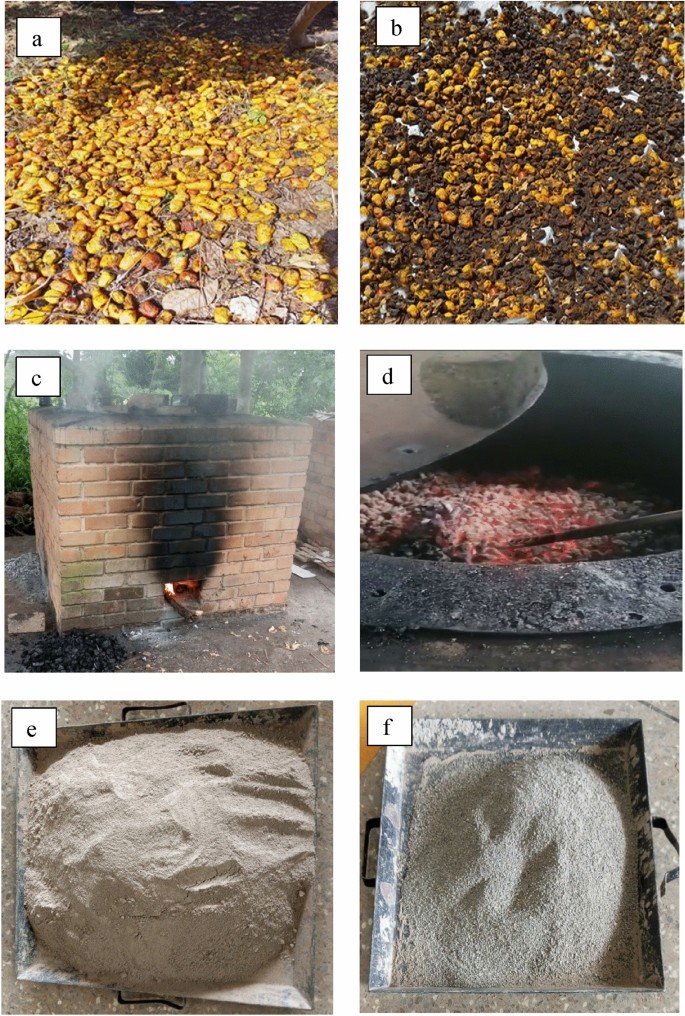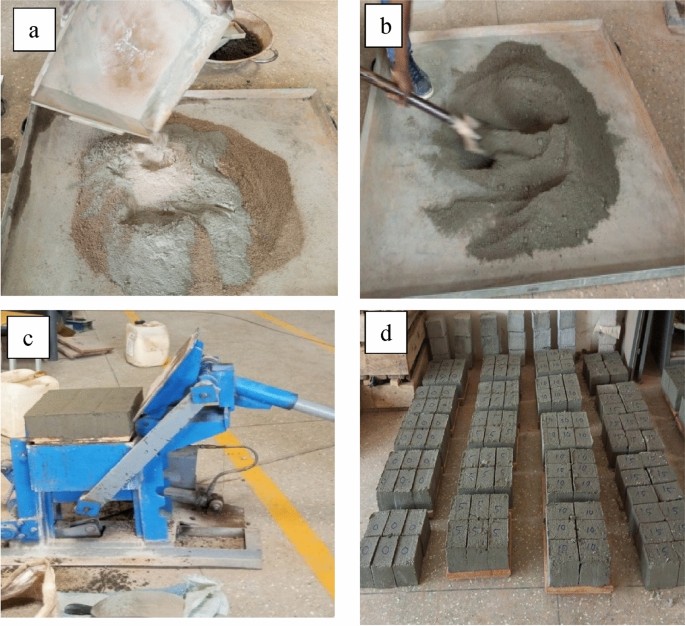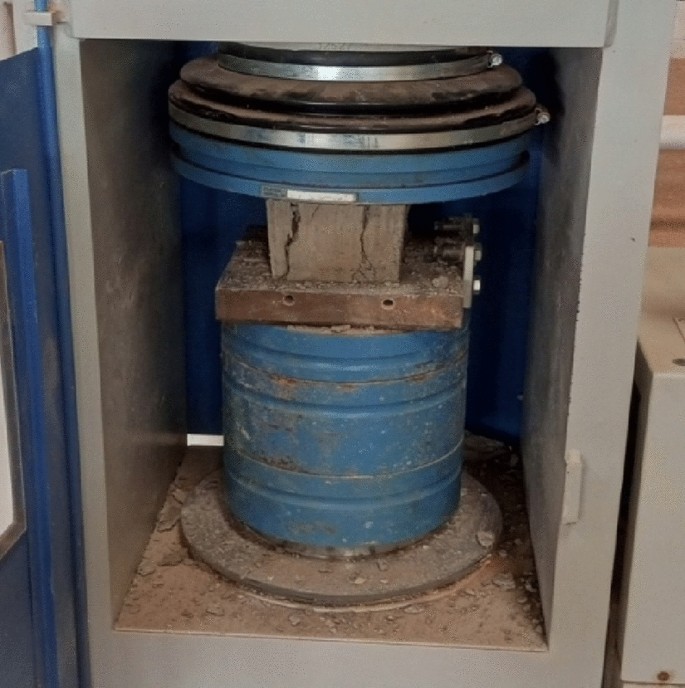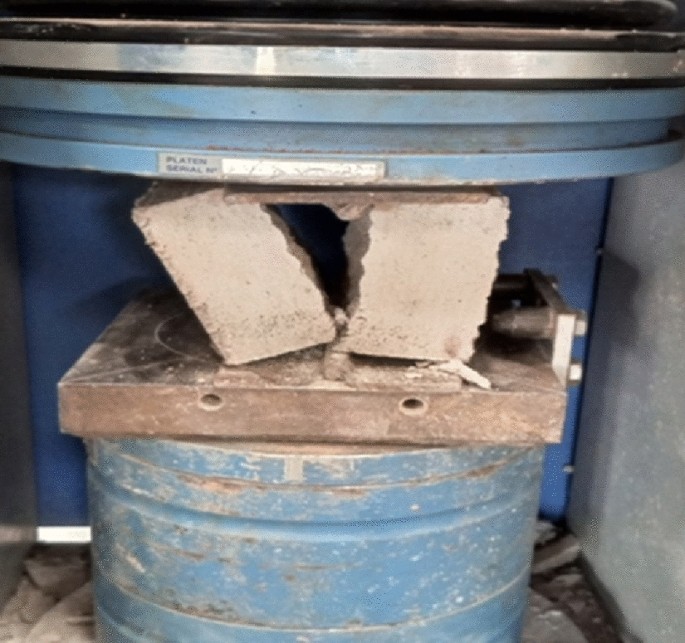
Materials
Cement, sand, cashew apple, and water were the raw materials used for this study which investigated the properties of sandcrete blocks stabilized with cashew apple ash as a partial replacement for cement.
Cement
The cement utilized for the experiment was ordinary Portland cement produced by Ghana Cement Limited (GHACEM), Ghana’s largest cement producer and the most common type of cement readily available in almost every part of Ghana. The cement conforms to the British Standard BS 12:199620 and meets the requirements of Ghana Standard GS 766:201121, classified as grade 32.5R.
Fine aggregate (sand)
Natural pit sand obtained from a construction site at Achinakrom located in Ejisu Municipality in the Ashanti Region of Ghana was used for the experimental work. The sand was free of clay, silt, dirt, and organic matter. It is commonly used as fine aggregate for sandcrete block production in Kumasi in the Ashanti Region of Ghana.
Water
Portable drinking water from the tap was used to prepare the mixes for the experiment since it does not contain any soluble iron or metals that may affect the sandcrete block’s ability to set and hydrate by BS 3148 Part 2: 198022. The water used was obtained from the Construction Departmental Laboratory at the Akenten Appiah-Minka University of Skills and Entrepreneurial Development, Kumasi, where the experimental study was conducted.
Cashew apples
The waste cashew apples used for this study were locally sourced from farmers in Tanoboase of Techiman North Municipal in the Bono East Region of Ghana. Cashew is the primary cash crop that supports the majority of households in the area. The region is known for its suitable climatic conditions and fertile soils that support the growth and production of cashews. The cashew apple waste used in the study was collected directly from the cashew farms of the local farmers. The cashew apple waste was harvested daily by picking them from the ground after farmers separated the nuts and left them on the ground to go to waste. This is shown in Fig. 1a.

Production process of cashew apple ash: (a) cashew apple waste, (b) sun-drying of cashew apple waste, (c) burning of cashew apple waste in a locally built furnace, (d) burning of cashew apple waste at temperature of 735 °C, (e) cashew apple ash ground into fine particles, (f) sieved cashew apple ash.
Material preparation and testing of specimen
Preparation of cashew apple ash (CAA)
Apple juice was squeezed out to reduce moisture content for speedy drying of the cashew apples’ waste (Fig. 1a). The cashew apples were dried under the sun (Fig. 1b) for 42 days, approximately one and a half months for easy burning. The cashew apples were burned through a locally built furnace (Fig. 1c) to obtain the ash. The burning took almost one and a half days to produce the ash. The initial temperature was 400 °C was increased to reach the desired temperature of 735 °C. The heat was maintained at this temperature for 32 h (Fig. 1d). The oven was put off and kept closed for another 24 h for cooling. After cooling the ash samples were collected, ground into fine particles (Fig. 1e), and then sieved using a 600-micron sieve to remove thicker and impure particles. The fine particles (Fig. 1f) were used for the experimental work. The particle size of the CAA used was influenced by a prvious study23.
Chemical composition of CAA and OPC
The chemical composition of CAA and OPC was determined using an X-ray fluorescence technique to identify the elemental chemical constituents of CAA and Ghacem OPC 32.5R. The CAA used in this study satisfied the chemical composition criterion as the sum of silica (SiO2), alumina (Al2O3), and iron oxide (Fe2O3) contents were more than the specified minimum of 70% as per ASTM C618 –1924.
Mortar mix design and proportion
A mix ratio of 1:6 and a water-cement ratio of 0.5. The cement content was replaced by CAA at 0 to 25% at 5% intervals. These mix designs were used for the experimental work with their quantities as shown in Table 1.
Specimens preparation
The study employed a water-cement ratio of 0.5 by weight and a mix ratio of 1:6 in producing the sandcrete block specimens. CAA was used to replace ordinary Portland cement in sandcrete blocks at five different levels: 5, 10, 15, 20, and 25%. The control specimens had 0% replacement of cement with CAA. The calculated quantity of materials for each mix design (as shown in Table 1) was batched by weight. The cement and CAA were spread on the sand (Fig. 2a) and manually mixed with a spade on a metal platform to obtain a homogenous mixture (Fig. 2b). Water was sprinkled on the mixture to obtain the mortar. A compressed block moulding machine was used to mould the block specimens of size 130 × 100 × 100 mm (Fig. 2c). In all, 180 block specimens were produced and cured for 7, 14, 21, and 28 days using sprinkling method (Fig. 2d). The specimens were tested for density, compressive strength, split tensile strength, and water absorption at the curing ages.

Production process of sancrete block specimens: (a) spreading of cement and CAA on the sand, (b) mixing of the materials, (c) moulding of the block specimens using compressed block making machine, (d) curing of the block specimens.
Testing of block specimens
Density
The density of the block specimens was determined following BS 2028:200025. The mass of the block specimens was measured with a weight balance after the specimens were oven-dried. The volume of the block specimens was determined. The densities of the block specimens were calculated with the Eq. (1).
$$\uprho =\frac{{\text{m}}}{\mathrm{V }},$$
(1)
where: \(\uprho\) = density (kg/m3); m = mass of block specimen (kg); V = volume of block specimen (m3).
Water absorption test
A water absorption test was performed following BS 1881–122:201126 to determine the rate of intake of water by the sandcrete block specimens produced with partial replacement of CAA. In conducting the test, the mass of each block specimen was measured after oven-drying, and immersed in water for 10 min, after which the mass of water absorbed was specimen also measured. Water absorption was then calculated with the Eq. (2).
$$WA =\frac{WA}{ M }\times 100\mathrm{\% },$$
(2)
where: WA = water absorption (%); M = mass of the oven-dried block specimen (kg); WA = mass of water absorbed block specimen (kg).
Compressive strength test
A compressive strength test was conducted to determine the load-carrying strength of the block specimens. This was done following BS EN 772–1:201127. The block specimens were cleaned with a duster after curing. Each block specimen was placed in the compression testing machine and load was applied until it failed (Fig. 3). The compressive strength was calculated by the Eq. (3).
$${f}_{c} = \frac{F}{A} ,$$
(3)
where: fc = compressive strength (N/mm2); F = maximum force at which the specimen failed (N); A = cross-sectional area of the specimen (mm2).

Specimen failed under compressive strength test.
Splitting tensile strength test
Splitting tensile strength test was performed following BS EN 12390-6:200928. The block specimens were placed in the compression testing machine with a splitting jig placed centrally below and above the block specimen. The load was applied on the block specimen until it split into two (Fig. 4). The splitting tensile strength of the blocks was determined with the Eq. (4).
$${f}_{t}= \frac{2P}{\pi Ld} ,$$
(4)
where: ft = splitting tensile strength (N/mm2); P = maximum force at which the specimen split (N); L = length of the specimen (mm); d = width of the specimen (mm).

Split block specimen under tensile strength test.
Statement of plant material used
The authors confirm that plant material (cashew apple) used in the study comply with the relevant institutional and national (Ghana) guidelines and legislation.




